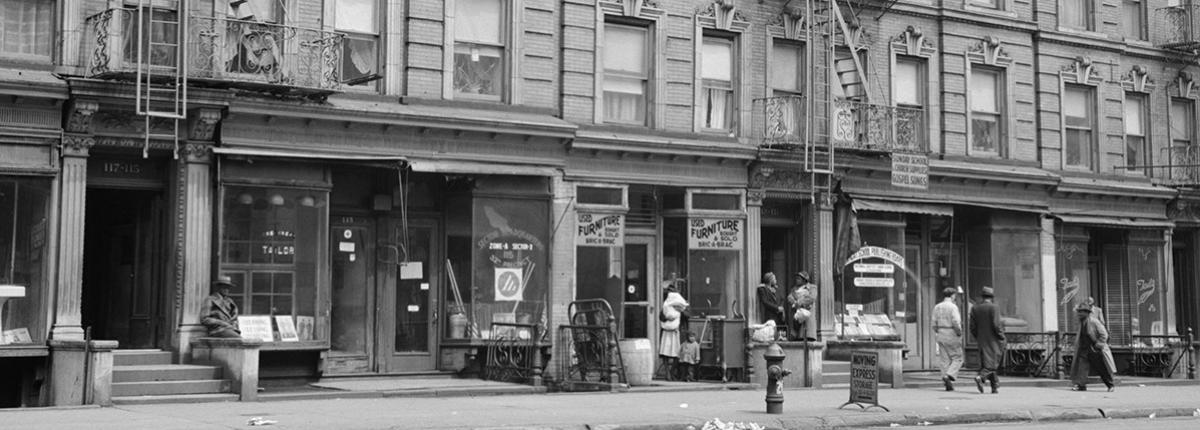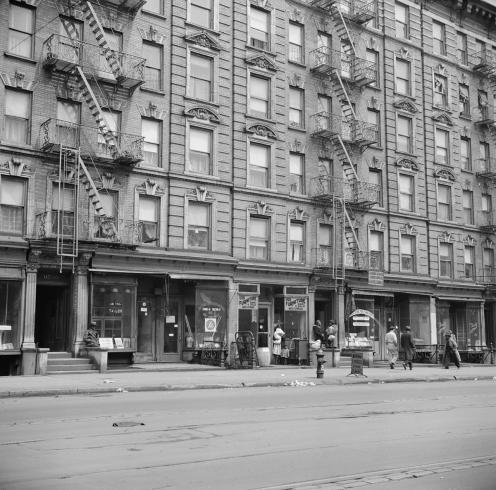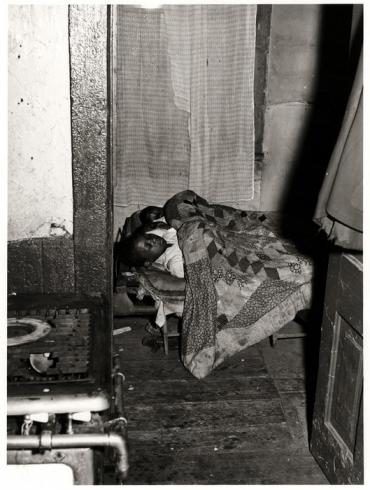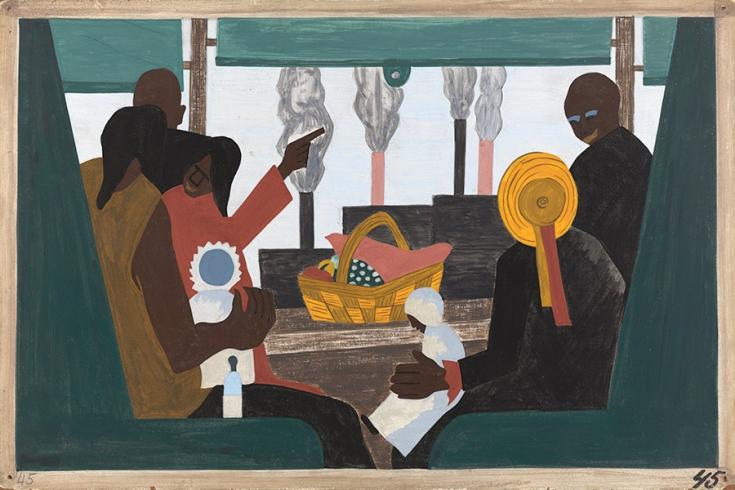Comparing Life in the North and South

Part 1: The Great Migration
Introduce:
- Read aloud This is the Rope: A Story from the Great Migration by Jacqueline Woodson. This book tells the story of one family’s journey from the South to the North in search of a better life during The Great Migration.
- After reading the story to students, ask the following questions:
- What might life have been like in the South?
- Why did the family want to move North?
- What might life have been like in the North?
Part 2: Exploration
Analyzing Art:
- Explain to students that they’ve learned a bit about what life may have been like in the South and what life may have been like in the North from the story they just read.
- IDENTIFY: As a whole class, they will look at two panels (no. 17 and 47) from The Migration Series. Together, they will decide if the panel shows life in the South or life in the North. During this exercise, model for students a “think aloud” where you explain why you think the panel shows life in the South or life in the North.
- As you model the activity, pose the following questions and share your responses for each panel:
- What do I see in this panel?
- Does this show me something that might be happening in the South or the North?
- What makes me think that?
- As you model the activity, pose the following questions and share your responses for each panel:
- Students will work together in pairs to study four panels from The Migration Series.
- They will sort the panels by those that show scenes from the South and those that show scenes from the North.
- Each group should have a piece of chart paper with two columns - one labeled “South” and the other labeled “North”.
- For this activity, use Panels no. 13, 24, 31, and 58 and discuss the same questions as the modelling activity for each panel.
Part 3: Comparing Life in the South and Life in the North
Compare:
- After students have sorted the panels, each pair should explain why they made those choices. Then, they should share what they think life was like in the South and what life was like in the North based on the panels they studied.
- At the end of the lesson, have a group discussion about why they think African Americans decided to move North.
- Based on the discussion, students should draw a comparison panel that shows the differences between life in the South and life in the North.
- Give each student a piece of construction or drawing paper that is folded in half.
- On one side, they should draw a picture of what life was like in the South. On the other side, they should draw a picture of what life was like in the North.
- Share in small groups the drawings of life in the South versus life in the North.
Additional Context
Lesson Context
The ambitious 60-panel series by Jacob Lawrence portrays the Great Migration, the flight of over a million African Americans from the rural South to the industrial North following the outbreak of World War I. By Lawrence’s own admission, this was a broad and complex subject to tackle in paint, one never before attempted in the visual arts. The series captures themes of struggle, hope, triumph, and adversity.
Adjusting to city life was not easy. Overcrowded conditions, the added expense of urban living, and new social mores led to many disappointments. For some migrants, the struggle was just as difficult as it had been in the South. They were faced with scarce and unsanitary housing and new forms of discrimination.
When migrants arrived in the North, they sought family and community as a way to enmesh themselves in their new surroundings. Many migrants gravitated towards people who were from the same region in the South, and predominantly black neighborhoods emerged, such as Harlem in New York and the Southside of Chicago.
Key Terms
Great Migration: In the Southern US, African Americans endured blatant discrimination and segregation as part of Jim Crow laws, as well as poor economic conditions. In the hopes of improved living and working conditions, hundreds of thousands of African Americans migrated from the South to the North, in particular to Chicago, Los Angeles, Detroit, Philadelphia, and New York. The Great Migration happened in two major waves: the first one being from 1916-1940 and the second one from 1941-1970.
Jim Crow Laws: Laws that were enacted from the 1870s until the passing of the Civil Rights Act of 1964 and Voting Rights Act of 1965 that made it legal to segregate people (a systematic separation of people) based on race. Specifically, these laws denied African Americans the right to vote, hold many types of jobs, and receive a quality education. Anyone who attempted to resist these laws could be arrested, fined, jailed, suffer violently, or even killed.



